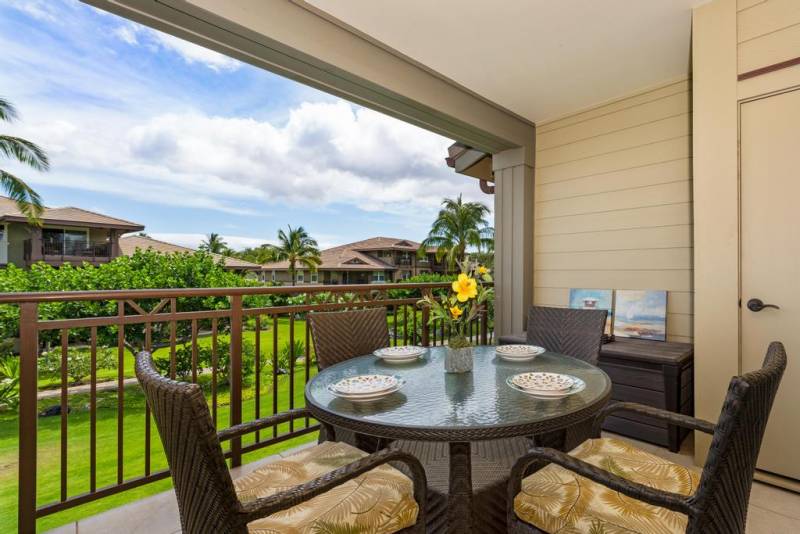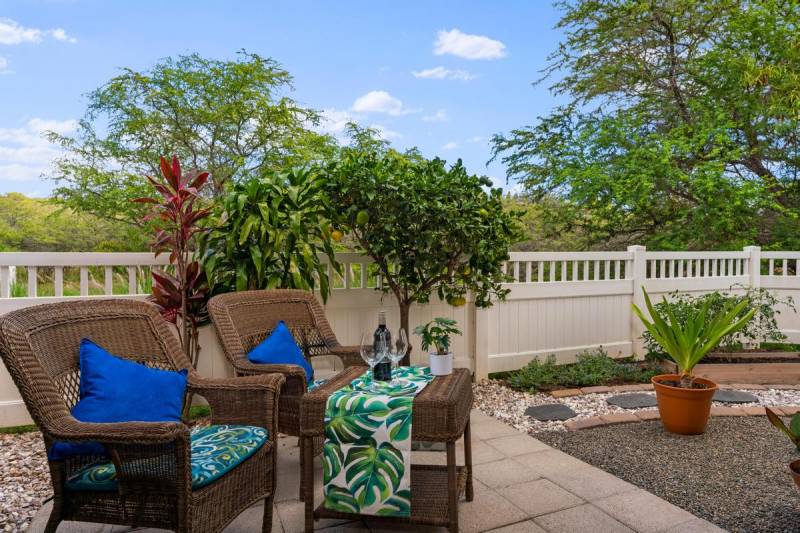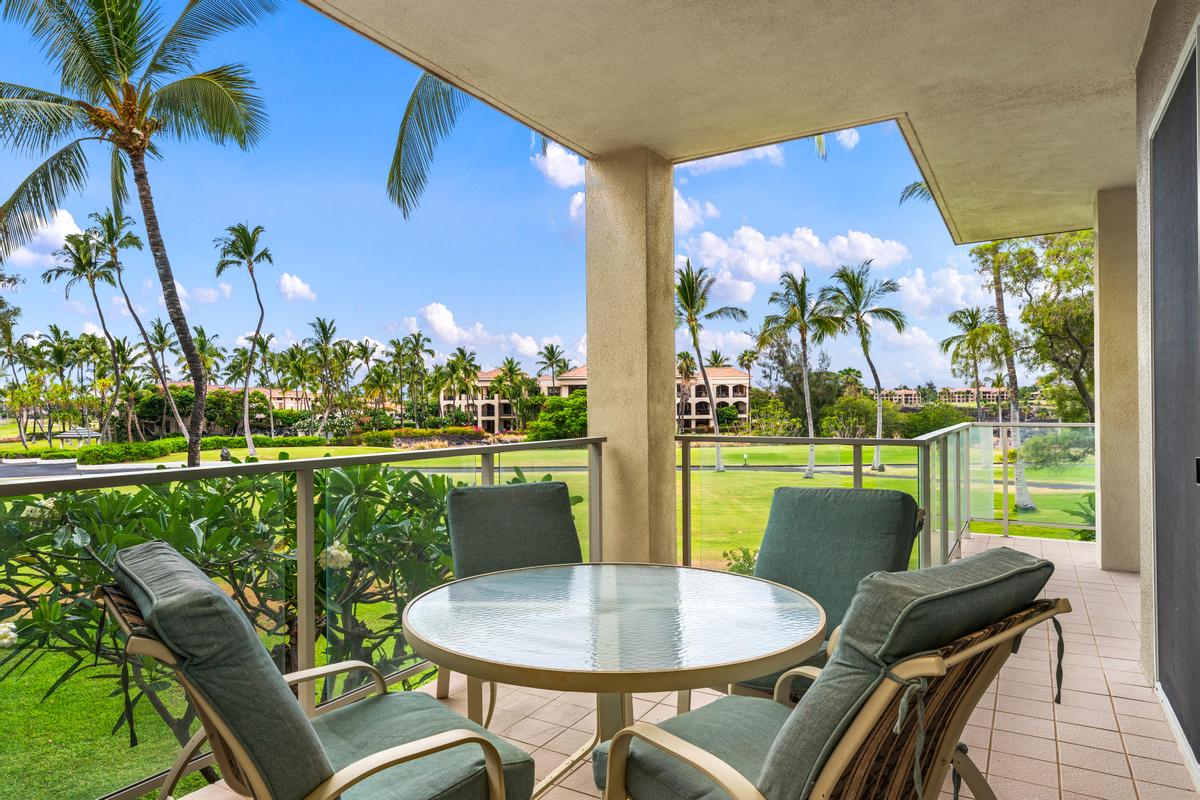The Path to a Short-Term Rental on Big Island Hawaii – Part 1
I recently held an open house at Fairway Villas #N24 and noticed every person who walked in had questions about short-term rentals. One person stayed for over 45 minutes asking questions about them! Afterward, I wondered why there were so many questions not answered and how I could better provide that information to buyers.
So I interviewed Kim Horton, a Property Manager and the President and Owner of Resortica Hawaii.
They are a 100% locally-owned company with an office in Waikoloa Beach Resort and have the local knowledge to assist you with managing a rental property. They specialize in short-term rentals on the Big Island.
In This Blog Post You Will Learn:
- Which areas on the Big Island allow short-term rentals?
- What is the cost of a short-term permit and what is the timeline?
- What is required to get a short-term permit?

Where Are Short-Term Rentals Allowed on the Big Island?
In 2018, the Big Island issued new laws limiting where short-term (vacation) rentals are allowed.
The easiest way to answer is: “You can legally have a short-term rental in a condominium unless the Homeowners’ Association states otherwise.”
Areas such as Waikoloa Beach Resort, Mauna Lani Resort, and Mauna Kea Resort are allowed, as they are in the correct “Permitted Zoned District” areas. Condos that are located in Waikoloa Village are currently zoned “Multiple-Family Residential (RM)” and are also allowed to do short-term rentals.
Yet in Waikoloa Village, you will find some of the Homeowners’ Association do not allow short-term rentals. Places like Elima Lani Condominium, the Point, Makana Kai at Wehilani, and 17th Fairways Villas do not allow short-term rentals, as per their Homeowners’ Rules and Regulations, also known as Covenants, Conditions & Restrictions (CC&Rs).
You will find the same is true in Kona. Some condos allow it, and some don’t. The easiest way to illustrate short-term rentals in Kona is as follows: the condominiums along Ali’i Drive on the ocean side allow for vacation rentals, while the condos on the other side of Ali’i Drive do not. However, having said that, in Kona, there are exceptions to the rule.

Hawaii Revised Statues identify the zones on the Big Island that allow for short-term permits, and they say: “Permitted Zoning Districts” means the following zoning districts, designated in HCC Chapter 25:
- Resort (V);
- General Commercial (CG);
- Village Commercial (CV);
- Residential and Commercial Zoning Districts, situated in the General Plan Resort and Resort Node areas;
- Planning Department Rules of Practice & Procedure 23-1, and
- Multiple-Family Residential (RM) for multiple-family dwellings within a condominium property regime, as defined and governed by Chapters 514A or 514B, Hawaii Revised Statutes.
This is where having a Real Estate Agent who knows the condo market and understands all the ins and outs of vacation rentals is essential.
What Does It Cost To Get a Short-Term Permit and How Long Does It Take?
- If the condo you are purchasing has a short-term permit already in place, then you have 30 days to transfer the permit into your name. During this transfer, you can still rent out the condo and continue running the business. Currently, there is no charge for this, but that may well change in the near future.
- If the condo you purchase does not have a short-term permit yet is in the correct zoning area, you can apply to the county for a short-term permit. Currently, it is a one-time fee of $500 plus a $1 process fee (a total of $501). This may also change in the near future.
- The county asks for all applicants to allow 90 days to process this application. Of course, it may come sooner, but best to be prepared for the 90 days.

Requirements for Getting a Short-Term Permit
If the condo you are purchasing does not have a permit and you need to apply, you will need:
- Site map of the community, which includes where general car parking is assigned and where visitor parking is located.
- Floor plan of your condo.
- Building permits and items such as plumbing, electrical, and building permits, showing they have all been finalized.
- You must apply and get your General Excises Tax (GET) License.
There is a $20 fee for this. Learn more at Tax Hawaii - Transient Accommodations Tax (TAT) License Number.
Read the Hawaii Brouchure on TAT
If you hire a Property Manager (like Kim Horton from Resortica), there is no additional fee for her team to get the Short-term permit for you and assist with your GET and TAT licenses.
There is a lot of information to learn about short-term rentals. Your Property Manager and Real Estate Agent can assist you with navigating the correct path. Let me know if this was helpful or if you have additional questions about short-term rentals.
With Aloha,
Leeana

Maren Purves
March 2, 2024
I currently own single family 4 BR home in Hilo with a STVR permit and NUC. If I want to continue renting short term, what are my options in Hilo if anything outside of resort zones is going to be taxed out of business?
Beth Thoma Robinson, R(B)
March 7, 2024
And of course our Hawaii Life Vacation Rental department is also a great resource for property management and does an excellent job of transferring the permit to a new owner!